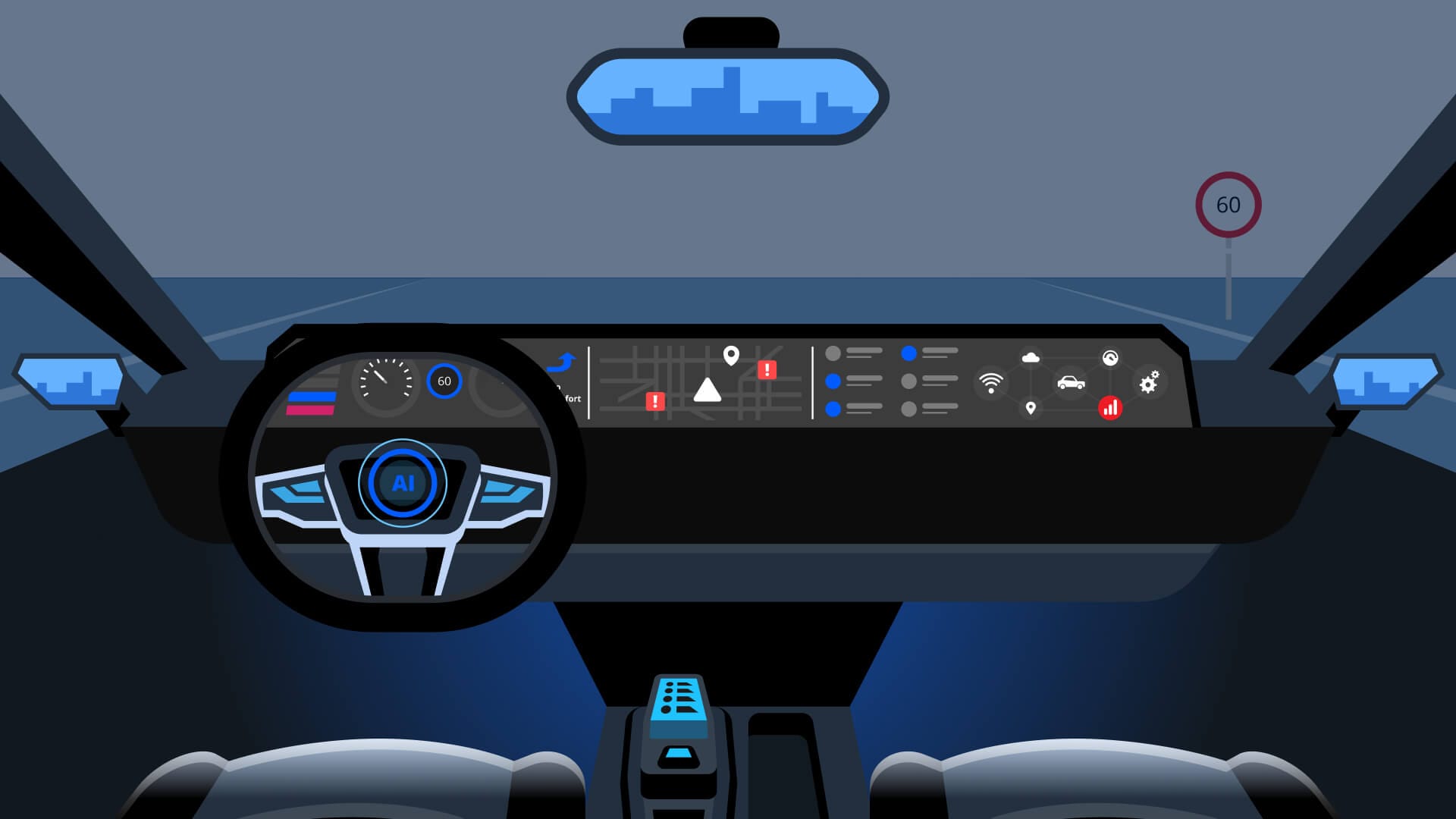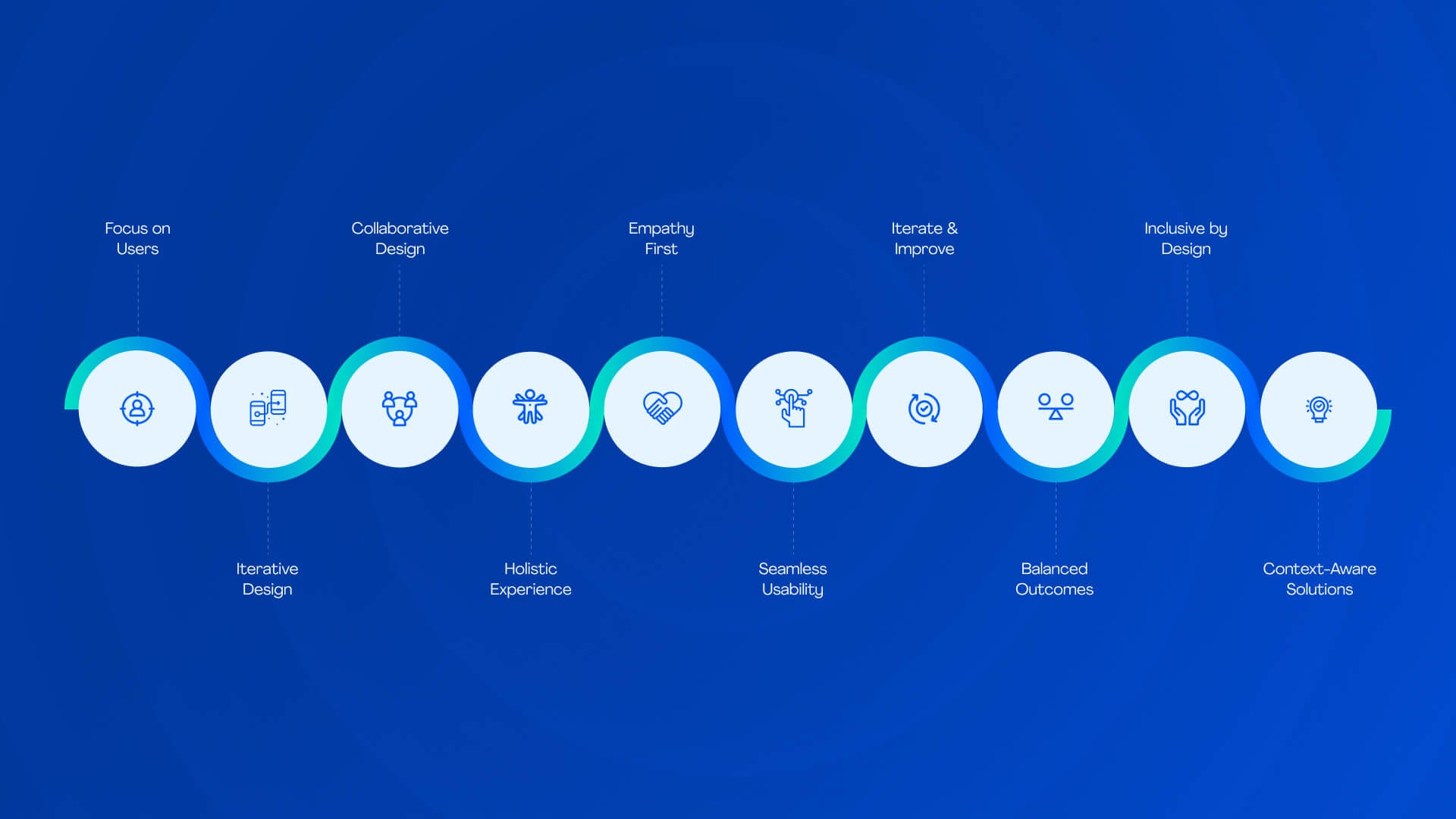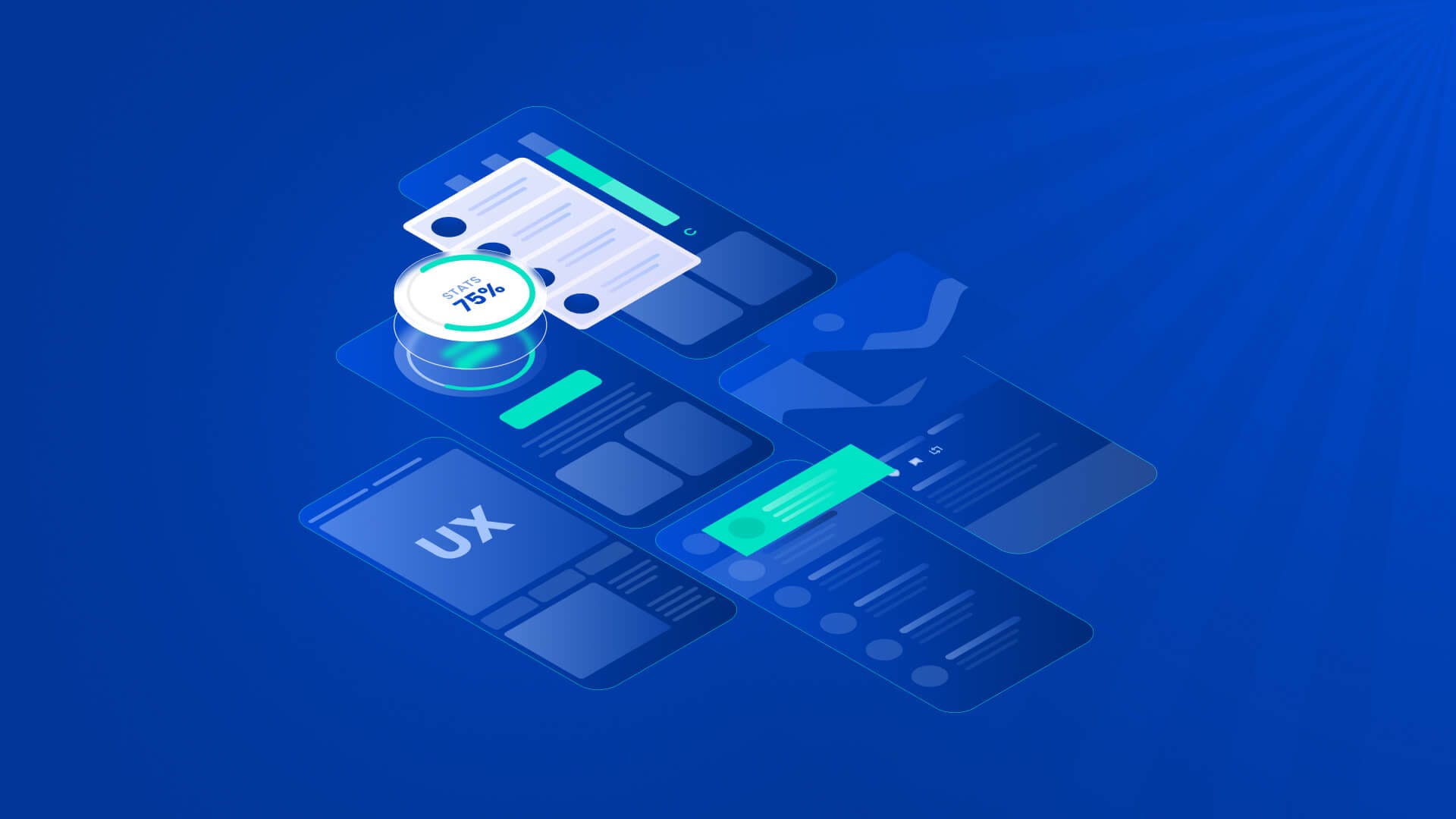Once, a capable SaaS startup built a platform-rich app and launched with the hope. The UI was clean; the pitch was polished, featuring an early sign-up option. Not even a month later, and the user rate had tumbled. The dashboards were not used, and the feedback? It was like this; ‘’too confusing”, too many steps’’, ‘’not interesting’’. The team couldn’t help but add more features to cope with the user’s expectations. But after failed attempts, they realized that the app was okay, but the design was the main problem. They failed because of a poor UX.
App failure due to bad UX is common. Many times, UX design challenges crash a startup. The design efforts go to waste due to misaligned UX phases across the product lifecycle. All the stakeholders involved, like the designer, product owner, developer, etc, need to focus on identifying the loopholes to achieve a sustainable digital product.
In this article, we’ll go through the UX challenges occurring in all the UX design phases and how to solve them:
What Are UX Challenges and How Do They Affect Product Success?
UX challenges are flaws that disturb the user journey. Right from the discovery, adoption, interaction, to the final loyalty stage, these flaws become an obstacle and disturb the smooth flow of the product, i.e., an app or a website. These flaws not only appear on the interface, but they are actually quite deep within the design lifecycle of the product. It is observed that UX challenges generally arise when the teams ignore crucial phases like heuristics, usability testing, research, validation, and iteration, or when there is not enough clarity in the phase.
Everything comes with a price. A minor neglect in UX design can lead to:
- Features that are never used
- Redesigning expenses
- Negative reputation or word of mouth
- High customer attrition rate
- Investors may lose confidence in the brand
Before jumping into how to solve UX challenges, it is significant to understand where these problems arise in the UX pipeline.
Where UX Challenges Occur in the Design Phases
UX design is a multi-layered, multi-staged process that makes up the product lifecycle. Every phase has its purpose, strategy, process, risks, and techniques. If a team skips a certain phase, inevitably, challenges arise quite later when the product is launched in the market, and there are:
- Dissatisfied users
- Costs of reworks
- Poor retention
- Too many issues in the product
So, if your team doesn’t want to suffer from this disturbance, let’s explore each crucial UX design stage, common challenges, and their solutions.
1. Design Discovery & Stakeholder Alignment
UX discovery is the fundamental stage to explore ideas, possibilities, vision, user needs, and goals. This phase also involves interviews with the stakeholders, defining the project scope, competitor analysis, and research. These factors are aligned to form a solid strategy for further phases.
UX Challenges in Design Discovery
A deep-level design discovery study is bypassed by many teams, creating a misunderstanding between user needs and business goals. Design Discovery is like the engine of a train. If there’s a problem in the engine, the whole train halts or derails. In the same way, a challenge in the UX design discovery can be very expensive for the product owner.
The Solution
Workshops for design discovery can be a good exercise for the stakeholders and team members to ensure everyone’s on the same page. The goals, needs, scope, target audience analysis, success metrics, and any familiar constraints are discussed, brainstormed, and aligned. This crucial UX design practice can prevent any distractions, disconnections in the design and development later.
2. User Research & Persona Development
User research emphasizes collecting information through qualitative and quantitative research to study user perceptions, behaviours, and pain points. This info helps to create a data-backed strategy to develop personas.
UX Challenges in User Research
Assumptions may create misunderstandings. When teams rely on assumptions and skip detailed research, it results in a misunderstanding of the actual scenarios and opportunities, and leads to further UX research challenges.
The Solution
It is simple. Teams need to keep having a curious approach. Interviews, inquiries, and surveys are integral components of primary and secondary research. Building personas depending on the actual user segments, demographics, and not on stereotypes, can be helpful. Also, it is important to refine the data for usage growth.
3. Heuristic Evaluation & Information Architecture
This implies an evaluation of the interface based on certain usability principles like Nielsen’s 10 Heuristic techniques. In the information architecture, or IA, content and interactions are arranged across the app or website.
UX Challenges in Heuristic Evaluation
User frustrations can cost a negative brand reputation. Frustrations arise if the user is unable to navigate the product easily. Inconsistency and inadequate feedback mechanisms can also upset the users.
The Solution
An intense heuristic evaluation in the early wireframe review steps can be beneficial. A clean product structure with well-planned information architecture using card sorting, sitemaps, and user flows can help to create real-world logic and user expectations.
4. Wireframing & Interaction Design
A wireframe is like the skeleton of the interface. This framework or structure helps design teams visualize their interface. The interaction design phase is all about placing components, elements like buttons, taps, clicks, animations, etc, through which the user will engage with the product. This stage is crucial in outlining the blueprint of the design.
UX Challenges in Wireframing and Interaction Design
Too much information on the screen, too many interactions can be overwhelming to a user and may back off from further engagement. If a design lacks clarity and context, it leads to user frustration.
The Solution
Teams can pay attention to task-wise flows by developing low-fidelity wireframes. It helps in validating the logic before an actual visual design. Interaction patterns that are consistent throughout the design with contextual CTAs can also be impactful.
5. Visual Design & Branding
How a digital product looks and feels is tested in the visual design phase. UI elements, typography, colour systems, spacing, and all the branding material help in creating an identity for the digital product. Responsiveness and accessibility are similarly examined in this stage.
UX Challenges in Visual Design and Branding
The usability of the product is far more essential to check than just focusing on the aesthetics and trends. If not in alignment with user behaviour and readability, it can cause friction and ultimately disappointment among the users. Visual design and branding ensure the interface matches the user's needs and business goals.
The Solution
Branding is like ‘toppings’ on the pizza. If you don’t add it, the pizza might lose its identity to a plain one with no value and traction from the customers. Testing contrast ratios and layouts at the early design stage can be beneficial. Basically, it’s all about trials, errors, tests, and iterations that make a great product. Just following the trends and aesthetics won’t create a long-term user base because a trend fades, but a brand stays longer. Finding a balance is essential.
6. Usability Testing & Validation
Usability ensures the consistency and responsiveness of the product. This phase is about observing and identifying pain points with the help of real users’ interaction with the product. Post this, the product design is validated based on analysis, assumptions, and observations supported by data, just before the launch.
UX Challenges in Usability Testing and Validation
Usability testing should be strictly performed at each step of the product design. Skipping tests or testing too late in the process can lead to post-launch fixes, expenses, and poor adoption.
The Solution
At distinctive phases, teams should run repetitive usability tests with real users. These tests can be conducted during wireframing and prototyping, and the almost-final design stage. It is important to emphasize error rates, ease of navigation for the users.
7. Design Handoff & Development Collaboration
This is a transition phase, where the final designs are transferred to the developers. This all includes sharing documents, assets, design tokens, and user behavioural specifications.
UX Challenges in Design Handoff and Development
The most critical challenge at this phase can be misinterpretation. The design can tell one story, and the development can bring another irrelevant story, built with a different intent. This misinterpretation can show up in the features and confuse the users.
The Solution
It is wise to involve developers during the whole process and not just in the final stage. Collaborative platforms and tools like Dev Mode, Storybook, Figma, and Zeplin can be used for the same. The developers and the designers both should know the ‘what’ and ‘why’ of the design decisions.
8. UX Audit & Post-Launch Optimization
A live and running product is evaluated during the UX Audit phase. User feedback and behaviour are tested counter to the usability standards. The audit examines for any bottlenecks and room for improvement and optimization.
UX Challenges in UX Audit
Do you buy a car and just drive it without maintenance? No right? Launch complete, and product left as is? No, it doesn’t work so. Post-launch optimization is like maintenance after the product is live in the market. An unoptimized product post-launch may lead to user frustration due to outdated or repetitive flows and poor user journeys.
The Solution
Timely audits leveraging usability analysis and metrics like heatmaps, drop-off points, and time-on-task can help in identifying any underlying pain points in the interface. Regular revision of the user needs, business goals, scope, and vision can help the designers, developers, and other stakeholders to be on the same page at all phases. Additionally, updating the design components and UX design deliverables as per user evolution is integral.
9. Scaling & Personalization
As the product scales and matures, the teams should make consistent improvements as per enhanced content marketing strategies, personalized design interactions, user targeting, and segments.
UX Challenges in Scaling and Personalization
Every user and their experience brings a different outcome. A ‘one-size-fits-all’ approach doesn’t fit if you’re creating an interactive and impactful UX design.
The Solution
Design teams should create an adaptive UX design. Modular design systems that scale using contextual onboarding, behavioural segmentation, and AI tools for UI UX designers can help in examining personalized and patterned interfaces.
“The UX design is a measurable and intentional process.”
By spotting every possible friction point, product owners, startup founders, and stakeholders can look at it as a concrete, representational method that creates a real product. Keeping an eye on UI UX design trends can help make the process updated and upgraded. Skipping any of the design phases can impact every other phase that follows.
Why Startups Should Invest in UX from Day Zero
UX design is a competitive differentiator that product owners and founders should consider. Startups that scale attend to feedback-driven, user-focused design principles right from the beginning.
Here are some facts to consider:
- In a bad user experience, 88% users do not return to the app or website
- Around 70% digital products become a flop due to deficient UX
An early and wise investment in UX design can enhance conversion, speed up product-market suitability, and eventually build a loyalty that stays long-term. Importantly, doing it right the first time is better than going back and forth with it. Partnering with a professional UX design agency from day zero can cut additional technical expenses, as it prevents rework in faulty flows and interactions.
Challenges and UX common mistakes are unavoidable, but they are also predictable and easily resolvable, if there is a defined clarity, structure, principles, and practices in place. Communication plays a key role here. Active listening, brainstorming, and coordinating during the UX design process can reduce misunderstandings. Teams that adopt this collaborative mindset build products that are loved and remembered by the users.
How TheFinch Helps You in Overcoming UX Challenges
TheFinch focuses on a human-centred approach and helps product owners to invest in UX design that creates a positive impact. We follow a full-fledged strategy from design discovery to post-launch optimization. We create a smooth design flow that fulfils both user needs and business goals and visions. Our UX design team makes an ultimate effort to ensure that every decision, every phase, goes through data-backed insights and not just assumptions and guesswork.
Nitin Rafaliya
Lead Designer
Nitin Rafaliya is the Lead Designer at TheFinch Design, specializing in crafting human-centered digital experiences that balance creativity, functionality, and impact. With over a decade in UI/UX and product design, he’s passionate about turning complex ideas into intuitive, meaningful solutions.





















